When you say “Bob Tullius” or “Group 44” to the typical racing history enthusiast, you are met with a certain reverence that befits a legend. It does not matter which car, a Triumph TR3, TR4 or a TR8. But beyond the great successes of those early years, nothing compares to the racing relationship between Group 44 and Jaguar. Most remember the class winning XJR-5 at Le Mans. However this XJS, on a corporate level, began that magical journey.
The Pick of the Day is a 1978 Group 44 Jaguar XJS advertised on ClassicCars.com by a dealer in Scotts Valley, California, that will immediately make the owner FIA certified with the ability for acceptance to virtually any historic race worldwide.
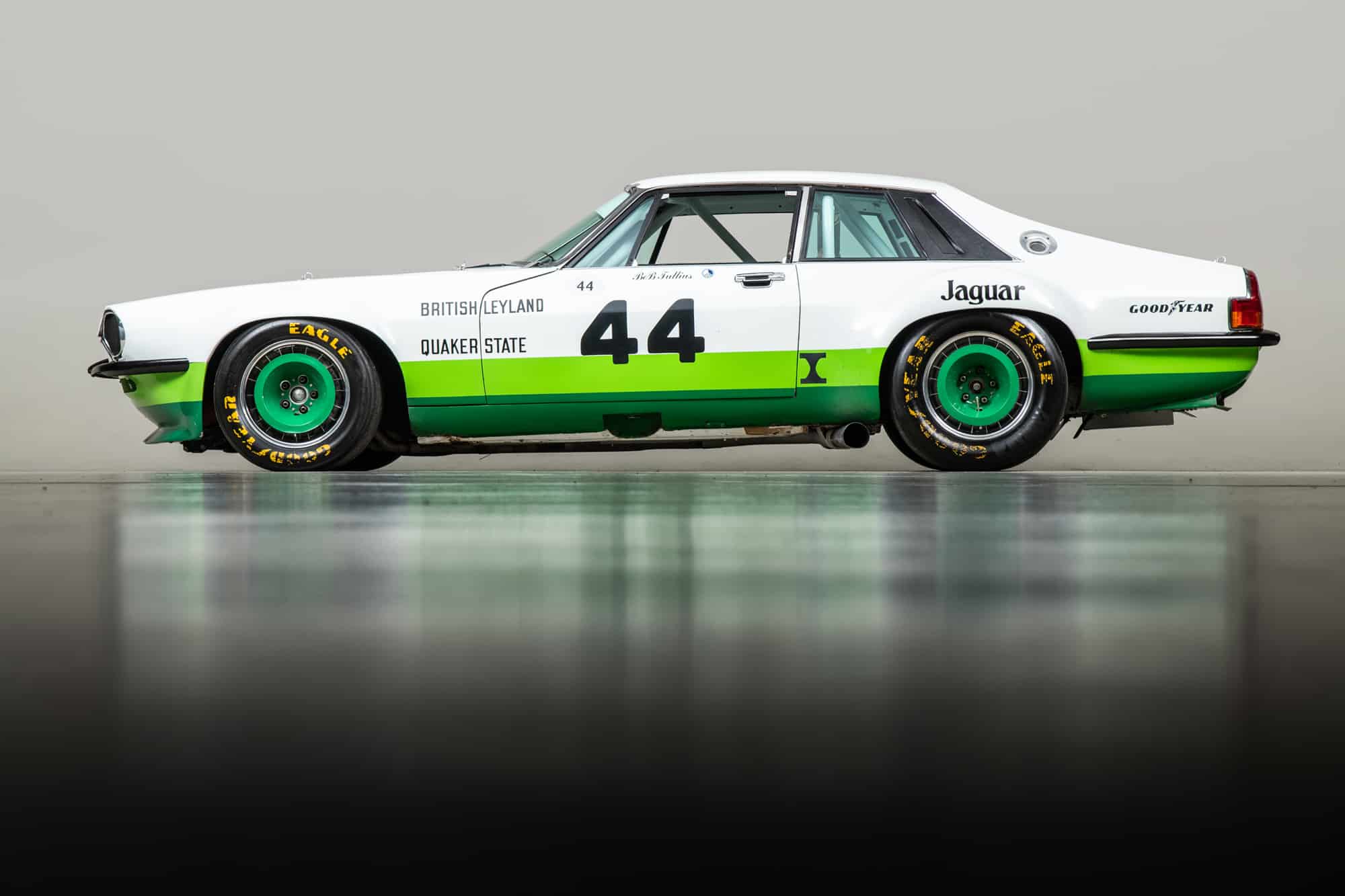
I love old race cars and racing history. I’m definitely dating myself when I say I saw this car win at Road America in 1978 in the hands of Tullius. This victory was one of many that catapulted Tullius and Jaguar to the top step of the Trans-Am Category 1 championship that year. It was a dominant season, proving Jaguar could “win on Sunday and sell on Monday” like the American pony cars that cut their teeth in the series up until just a half decade earlier.
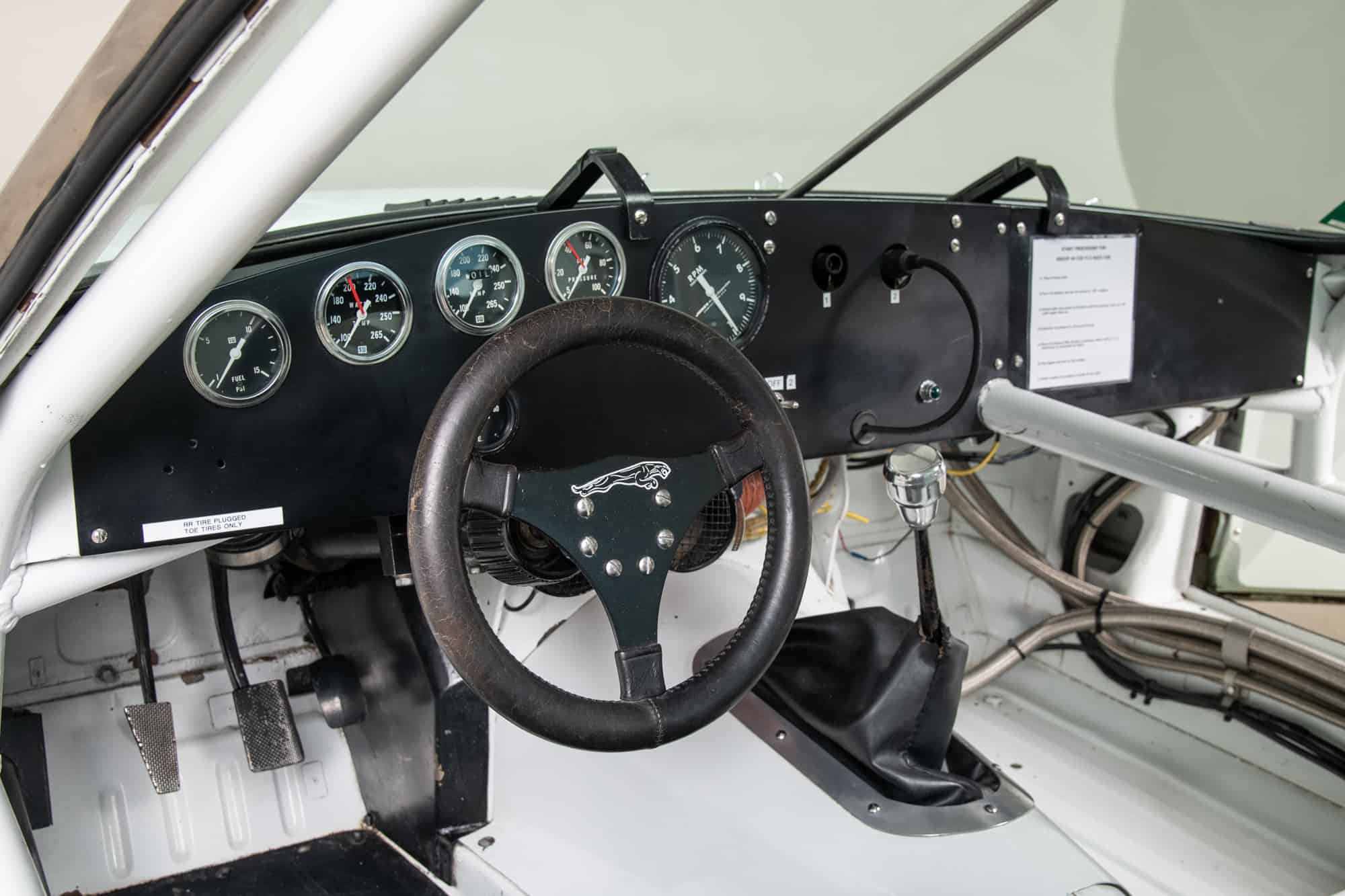
Jaguar had discontinued the XKE in 1975, focusing more on performance luxury. Initially the XJS, though beautiful and luxurious, was not a hot seller for the Coventry, UK OEM. Wanting to prove its worth as an enthusiast car, Jaguar approached Group 44 to develop a racing version of the new sedan. Develop they did. While the 1977 car was competitive, it was this 1978 car, in the iconic green Quaker State livery, that grabbed the laurels and fanfare.
Group 44 took full advantage of the “silhouette rules,” which meant as long as the car looked like the homologated street version, underneath the skin it could be a full-on racer. Powered by a 5.3 liter overhead cam V12 with six Weber carbs, this racer made 580 horsepower. Add an acid-dipped body with numerous lightweight components, the XKS was a wolf in sheep’s clothing.
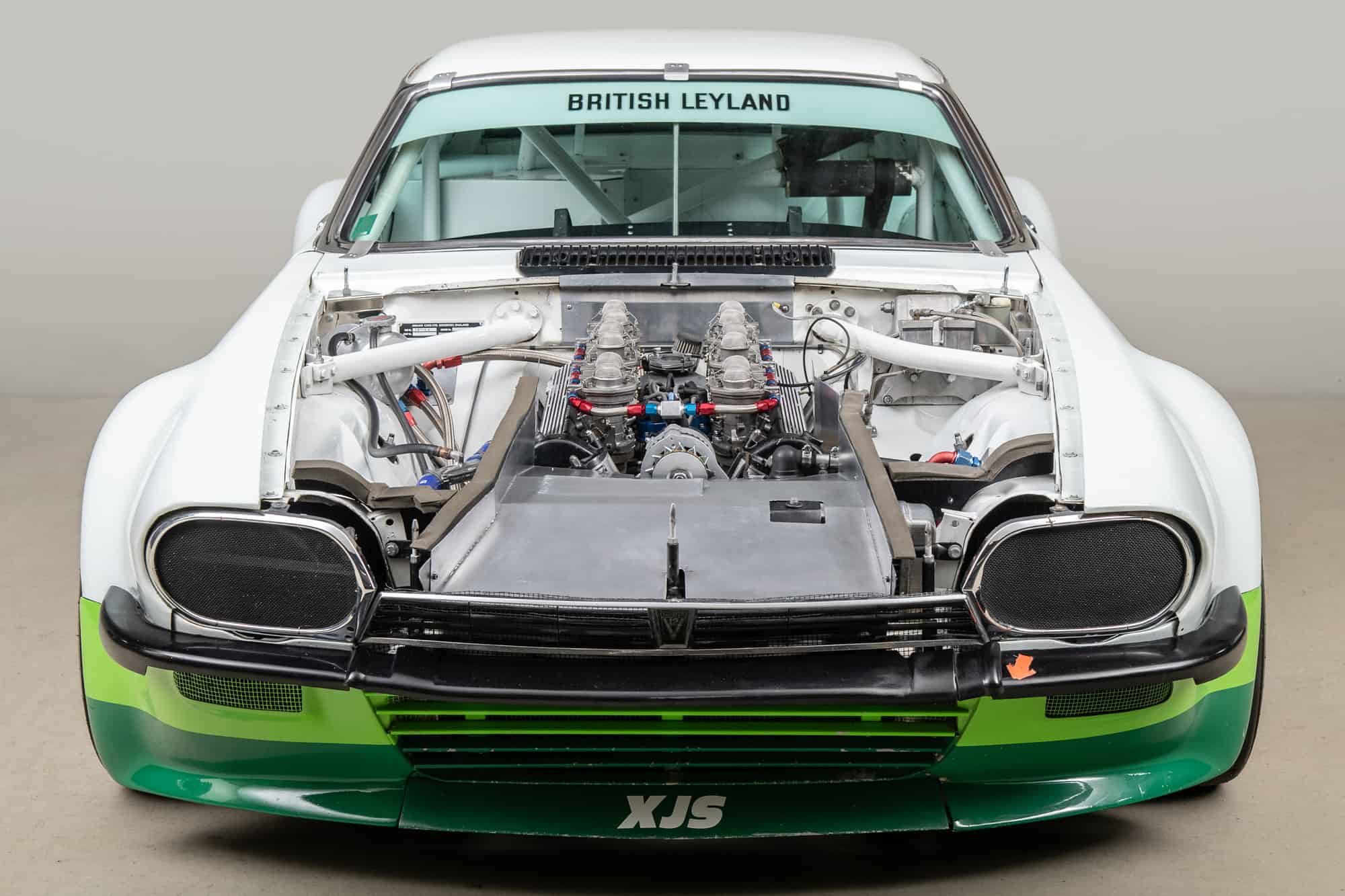
After the success of the 1978 season and a new Jaguar prototype program with great drivers such as Doc Bundy, Brian Redman and Chip Robinson, this car went into storage.
According to the seller, “The car was placed into storage by Tullius for close to three decades before going to collector Gary Bartlett in 2007. Bartlett commissioned Chris Keith-Lucas in England to mechanically restore the car, including a comprehensive engine rebuild. In March 2009 the XJ-S won the FIVA award at the Amelia Island Concours d’Elegance, and in August 2011 it was proudly displayed at the Rolex Monterey Motorsports Reunion in Monterey at Laguna Seca.
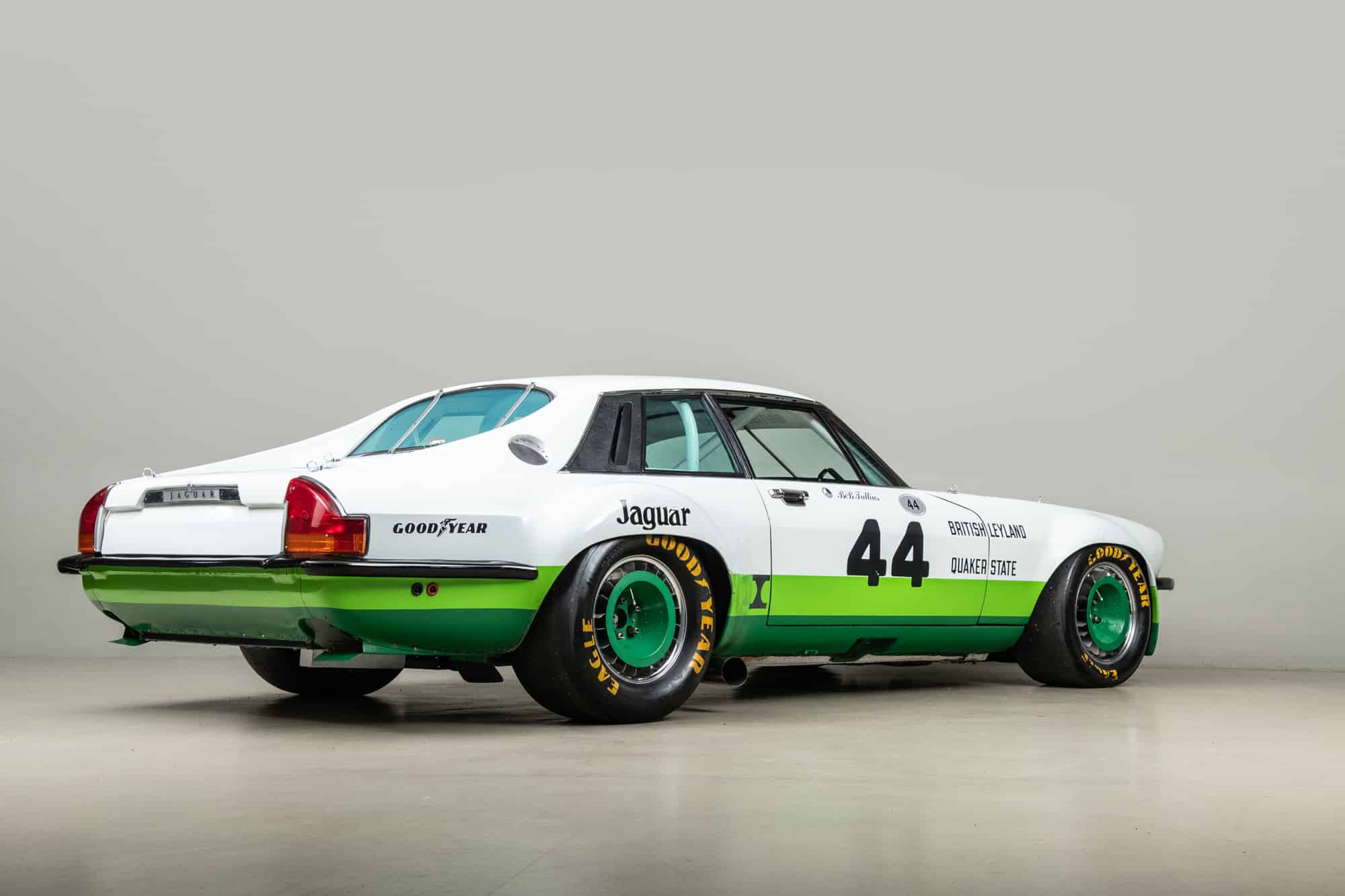
“Two years following, the Jaguar received certification for major racing events with an FIA Historic Technical Password and a FIVA card. In 2013 the car was purchased by its most recent owner.”
The seller said that the car still has the track patina from the 1970s. They do not, however, state a price. Of course when it comes to cars like these: “if you have to ask…”
To view this listing on ClassicCars.com, see Pick of the day.



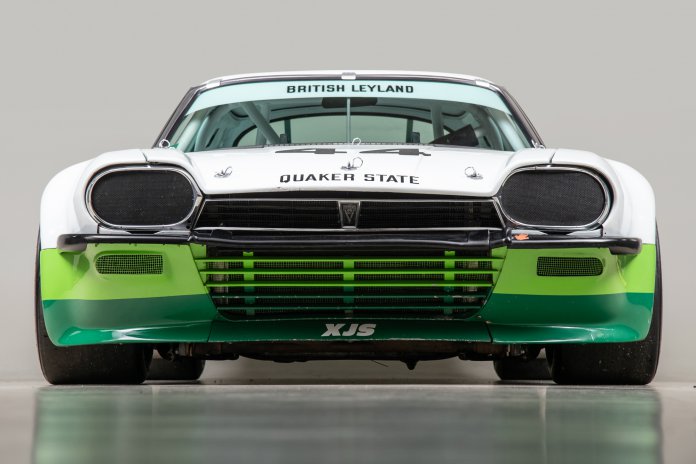


As long as there are no Lucas electrics…
To all those who know little or nothing about Group44, known as “The Great White Wave” among those of us who know: “It is wiser to say nothing and let others wonder if you are a fool than to say something and remove all doubt.”
It has been said that Bob “Rapid Robert” Tullius, Group44 founder/CEO, could turn a brick wall into a winning race car, and I would say his turning a Dodge Dart into the dominant race car of the 1966 Trans-Am Series pretty much proves that.
If you have to ask how much to maintain that V-12, you can’t afford it!
Yeah, and my former 1982 XJ6 was also a handful to maintain. The electrics were a curse on most days.
an easy fix , change the under hood electrics to GM/Delco!
works for me no more problems, been 26 yrs so far!
Tom. The Tullius/Group 44 operation was extremely professional. I was at CSPRRC in 1978 and saw the victory … and, also was winner of the FP race in a Triumph Spitfire.
Keep up the great work!
Cannonball Jack May
Appreciate the comment Jack. As I said, the very mention of that team is met with reverence. Between Group 44 and Huffaker, there were some great British race cars (and drivers) on these shores. British cars tied with American ingenuity and know-how. A great era!
Jaguar V-12 meets Nascar…
Should run at least 100 miles before you get it towed to see Fritz the German auto mechanic. Maintainence is approximately $600 a month. The tires last the longest as you never get it to run long enough to wear them out. I had an XJ6 that looked beautiful. Cost me $4000 to buy. I got it to stay running after replacing the engine with a kit from John’s Cars out of Dallas for 1200 bucks and an engine out of a Chevy El Camino. But I did not change the wiring and so I was working on that when someone offered me $2000 while I was working on getting the windows to work because none of them did. Lucas or as we called it Lucifer wiring is extremely unreliable. I had it for about 5 years and put about 15000 miles on it. Most of the time it was covered up in the garage.
Um, guys- this is a full on purpose built race car. The electrical system has nothing to do with the factory car you had such terrible experience with, and the V12 is quite likely beyond any modern Jag dealer; Mr. Blankert, if you could support this car in use for $600 a month, you’ve sold your soul to Satan. Racing this I suspect burns well over $20,000 a month, unless you own the transportation, do all the mechanical work as well as drive yourself, get free parts/tires, and your crew are all unpaid.
Oh- tires on this don’t last the day, bring several sets on the appropriate rims.
Ryan, I kept my mouth shut and let the peanut gallery do their thing. Thank you for clarifying the ins and outs of owning a historically significant, American built, championship winning race car. Hence “a wolf in sheep’s clothing”
Tom & Ryan, I saw this a number of times in Tullius’s hangar of cars at Sebring race track. Visited often during the 12 Hours. Did not know it was not there any longer. Amazing that some groupies have no idea where the fast lane actually exists and think that Fritz the German mechanic would be the appropriate choice rather than Geoff the Brit.
I think you are dead-on correct Jim. When it comes to the brit cars I have two go to guys: John Saccameno in Illinois and Gregory Nel here in Arizona.
Jim, there are still people out there who call these cars “Jag-wire” too. But in the end, we are happy for the readers.
I had a Jag once. A 1968 420 (as distinct from the 420G – a hideous monster built for the American market). I bought it from the first owner’s estate in 2017.
In maroon with wire wheels, it looked absolutely gorgeous – and it didn’t take me long to realise why the first owner kept it all those years and did very few miles.
I’m sure that back in 1968, it’s performance was sparkling (in comparison to what most Englishmen were used to anyway) but in 2017 it went through petrol like there was no tomorrow (built well before the 1970s oil shocks) and, while it was a lovely cruiser, it was no ball of fire.
I solved the problem. I sold it.
Character in my garage is now provided by a 1958 Morris Minor Traveller. It’s a fixer upper that doesn’t run (so it cost quite a lot less than the Jag) so it keeps me in contact with Uncle Lucas (the Prince of Darkness) but, alas, doesn’t look near as good and doesn’t keep near as much dust off the floor.
:
Malcom, I feel your pain. It takes a special kind of person to own a British road-going car. I was fortunate that my 1995 XJ6, from the Ford-era, was actually a wonderful and reliable car. Having an old Jag or Healey requires patience and know-how. –And if there is no oil under it… But this particular race car was essentially an American Built Trans-Am competitor. Yes it had the V-12, but 6 Weber Carbs and custom wiring… No prince of darkness there. To buy a car like this would be a completely different ownership experience. Most likely it would kept with a business that maintains, transports and preps the car and the owner essentially meets the car at the track to “arrive and drive.” If you have never been to a historic race, I highly recommend it.
Tom,
Your comment about “jag-wire” reminds me I’ve heard that mispronunciation from Mike on American Pickers
quite a few times. Fantastic show, Mike’s awesome with motorcycles and bicycles, but he’s a novice when it comes to collector cars. But I guess he has to gush excitement over mundane cars because of the necessary showmanship for the show.